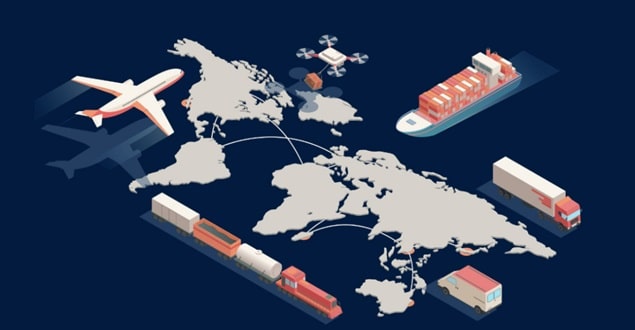Do you recall the times you spent poring over a paper map and carefully plotting your routes with a red pen while crossing your fingers? Yes, those times have passed. Supply chains are like intricate mazes in today’s changing world. Without the proper tools, navigating them effectively may be frustrating and catastrophic.
Right now, the tools for mapping logistics are your personal supply chain saviors. Imagine a digital expert who fulfills your wishes with intelligent insights, real-time data, and an overview of your complete operation. It sounds really promising, doesn’t it? Let’s examine these logistics map tools’ five potential uses to turn your supply chain into a lean, productive machine:
1. Ditch the Detours, Save Money
Think of logistics mapping tools as your own delivery GPS. The days of static routes ignoring construction zones and traffic congestion are long gone. These technologies dynamically calculate the most efficient routes for your fleet, accounting for everything from rush hour chaos to unexpected downpours. Imagine your vehicles speeding through traffic jams, conserving valuable fuel, and shipping cargo more quickly. That’s a superhuman action that will result in satisfied consumers, cheaper transportation expenses, and more money in your pocket!
2. From Black Box to Crystal Ball
Do you remember how frustrating it was to constantly check on your shipments and hope they haven’t fallen into the abyss? Supply chain mapping tools permanently eliminate that fear. You can view the exact location of every shipment with real-time tracking, from busy ports to your customers’ doorsteps. Plan ahead, interact with businesses in a proactive manner, and convert conjecture into well-informed decision-making. It gives you the ability to anticipate problems and take action before they prevent deliveries from happening!
3. Warehouse: From Chaos to Calm
Imagine your warehouse: is it a tidy haven or a maze of clutter? Tools for logistics maps can convert them easily into a clean, organized space. They draw a blueprint of your warehouse, emphasizing any weak points and unused spaces. Consider maximizing picking routes, visualizing inventory flow, and guaranteeing that the appropriate products are always easily accessible. It’s like having a magical way that helps you save money on labor and valuable time by organizing your warehouse and streamlining operations.
4. Inventory Intuition: Predicting the Unpredictable
Abandon intuition; you have the power of data! Your inventory systems can be integrated with logistics mapping tools to provide a comprehensive picture of stock levels at all locations. They forecast shifts in demand, spot possible stockouts before they happen, and even make recommendations for the best way to allocate inventory depending on real-time information. You can prevent stockouts, cut down on needless carrying expenses, and make sure you have the appropriate things at the right place at the right time.
5. Teamwork Makes the Dream Work
Do your supply chain gaps exist? Not any longer. With the use of logistics mapping tools, a common platform is created so that everyone can watch the entire process—from warehousing to transportation to procurement—take place. It is basically a virtual room where information is openly exchanged, encouraging cooperation and well-informed decision-making among all divisions. It’s like having a team uniting ability that makes it possible for everyone to collaborate easily and optimize the supply chain as a single, coherent entity.
These are just a few examples of the many uses of map tools for supply chain efficiency. They can provide you with the ability to make data-driven decisions, cut costs, increase customer satisfaction, and obtain a competitive advantage in a dynamic market.
So embrace the future of efficient logistics and follow all industry news to confidently control and navigate every aspect of your supply chain when these digital marvels are at your disposal!















